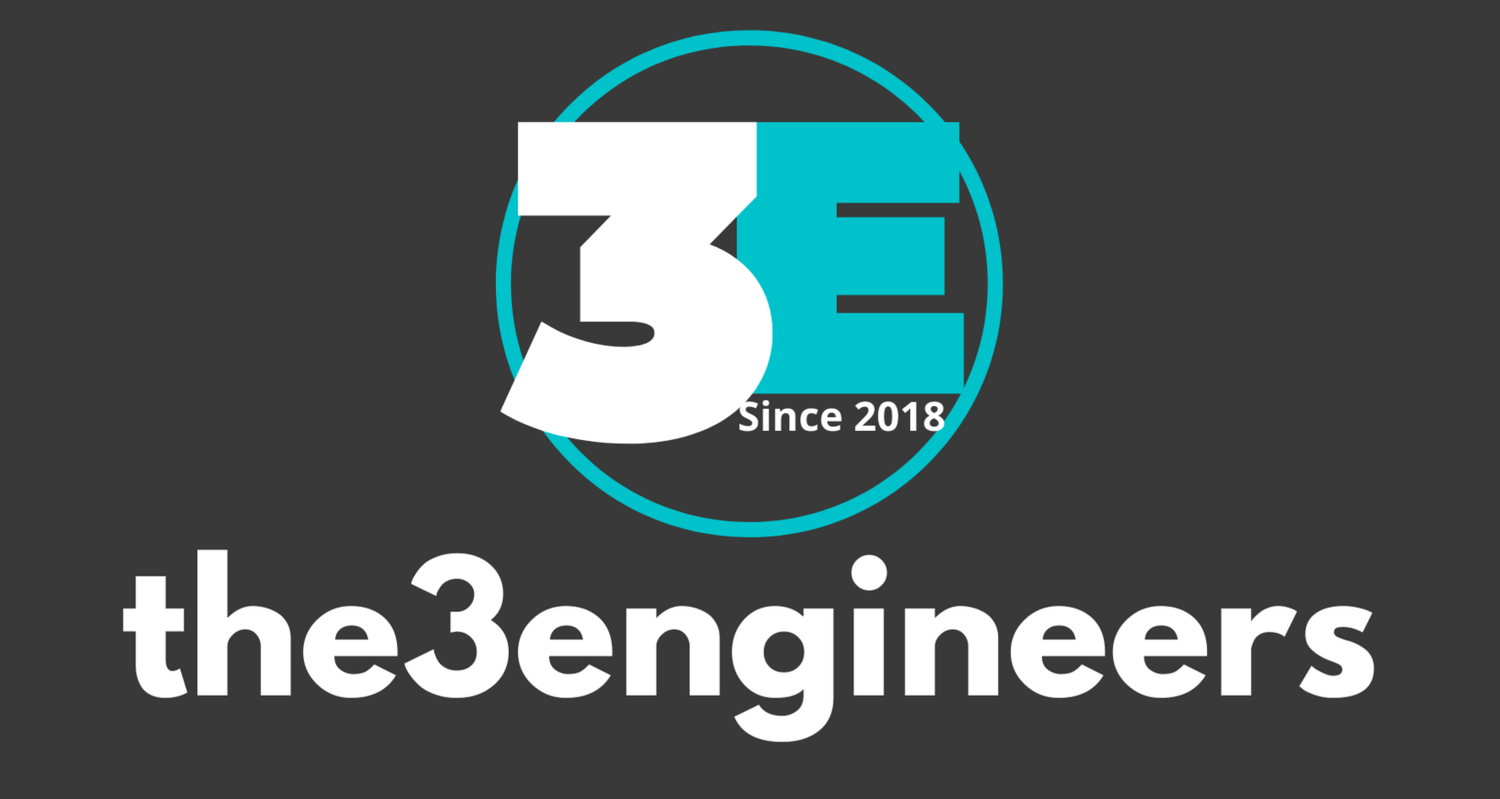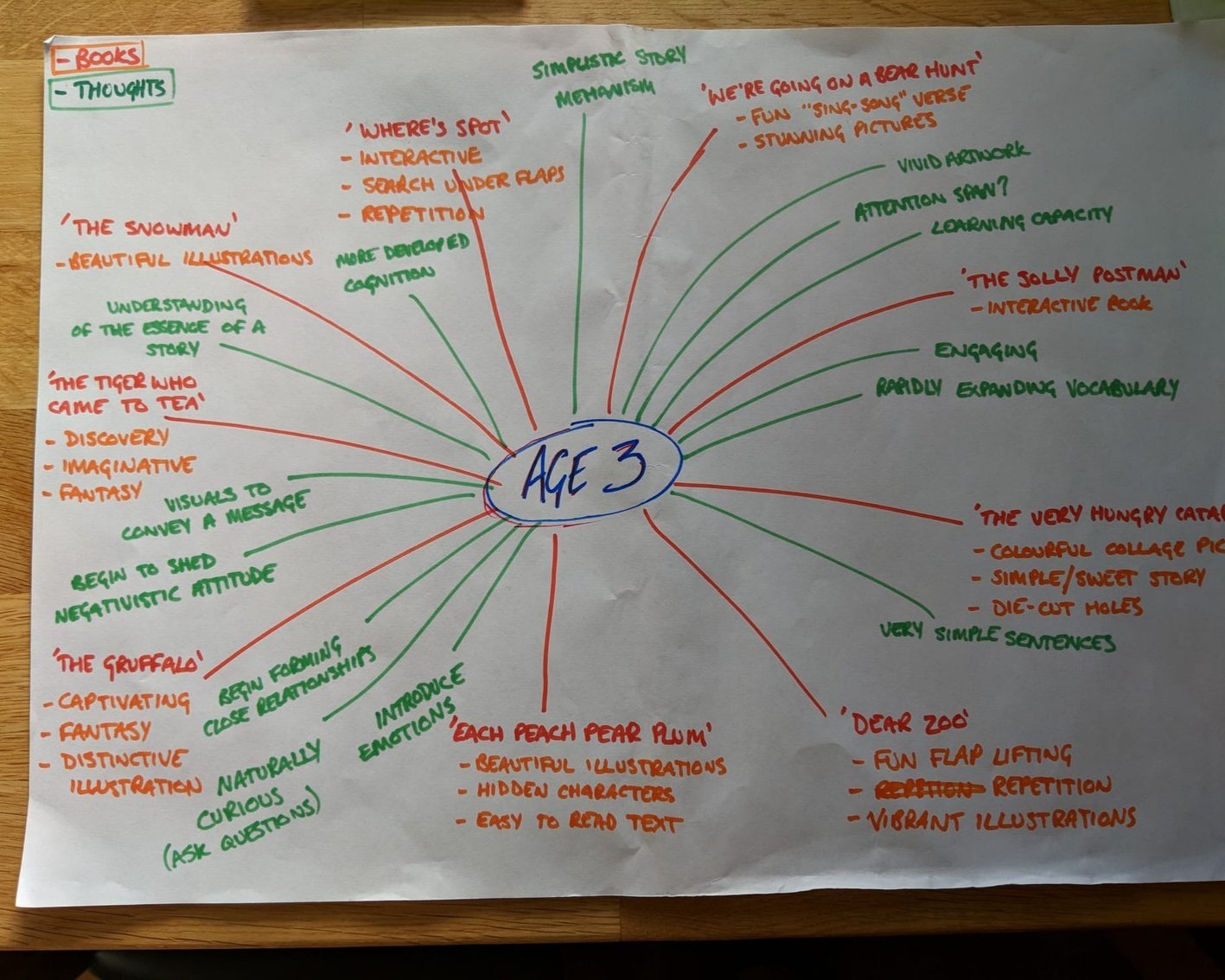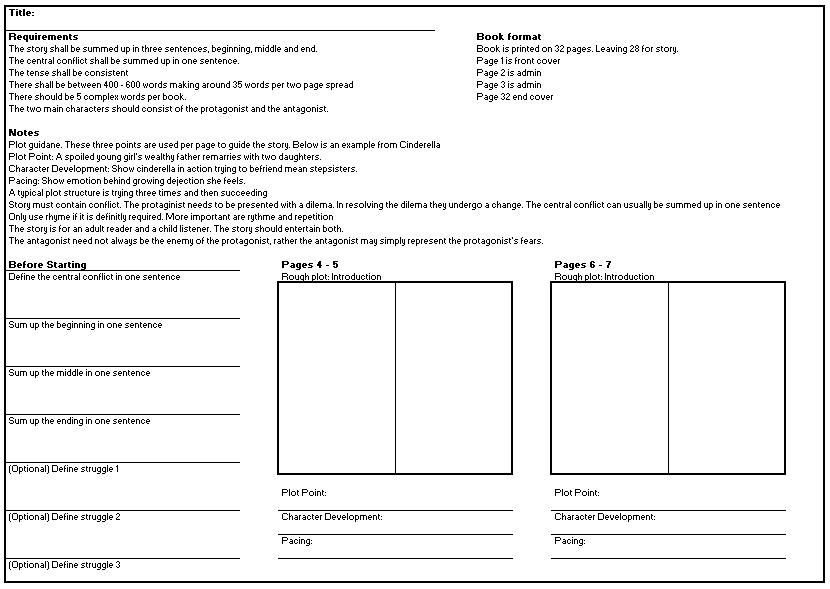Putting Pen to Paper
Initially when you read the title of this blog you might had thought here is where they show their seamless process to write the books, but you would be incorrect. Firstly, we didn’t know how to rhyme, secondly, we didn’t have any stories and before we had even got that far, we didn’t even know what age range we were going to write the books for. So, it was time to do some research!
We each took a different age range and explored various books that were currently on the market, whilst capturing our initial thoughts about their concepts, illustrations and vocabulary. We also assessed their construction eg. thickness, materials and number of words. This is what we came up with.
The conclusion from this workshop was that we still loved working with sharpies at new working office environment being the pub. It really suited us you see because our normal place of work is a very dated office. So, Nick put in a request to his boss Jon to see if this could be a full-time flexible working arrangement for the team on the grounds for improved mental health; who then escalated the request to his boss Matt. Sadly, we are still waiting on Matt to report back to see if the request was a success (classic senior management for you) and until then it was still the 9-5 daily slog for us as engineers at the office. But we enjoyed our work so it was some added fun.
Seriously though, after reviewing many books we concluded that the age ranges were wrong for us. Now don’t get us wrong, we all love pop up books and especially the books with finger puppets and textures, but this didn’t align to future ambitions we had of using the books in schools to make the biggest impact. So, Jon came up with a classic engineer’s strategy (which needs to be read with an engineer’s robotic voice) being; ‘what are the requirements for how to write a children’s book’. Genius! And with that smart idea it was also time for us to start doing some more market research and ask various groups of people what they liked. So, Matt was actioned to speak with kids groups that his kids were involved in, Jon to speak to some parents at work and Nick to go in to some local independent book shops and ask around.
In the next session Jon turned up with a requirements template identifying the basic fundamentals for children’s books aged 5-7, which was a great starting place right. This captured the average number of pages a book has for this age range and the number of words, along with the principles of any story (beginning, middle and end). As we digested this fresh information with a few bevies, we were all feeling confident we could engineer a book. Requirements are our bread and butter after all and had total confidence in the process, but we still didn’t have a concept for our book series. So, it was time for each of us to come up with a story based on the structure of Jon’s requirement document.
To summarise what we had learnt in this session; the books needed to be roughly 30-36 pages and contain around 700 words. We didn’t use Julia Donaldson’s books as a reference we promise!







